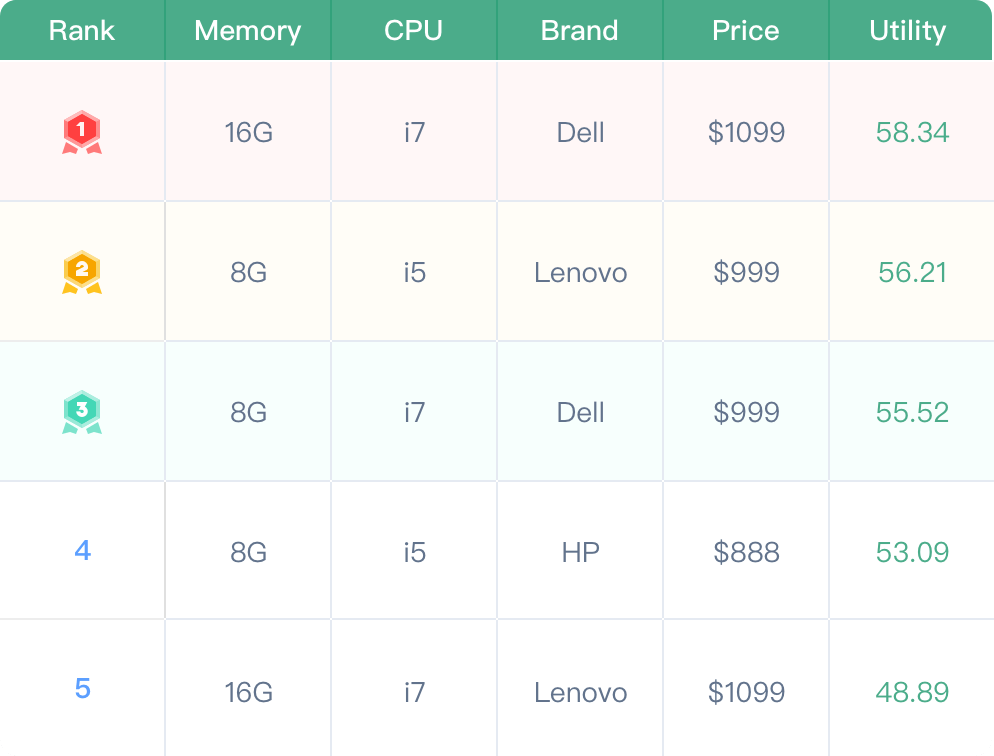Conjoint Analysis Model
The Basis for Optimizing Decisions and Strategies
Conjoint Analysis is a market research technique used to understand how consumers make trade-offs and choices among multiple product attributes. This analytical method helps researchers understand which attributes have the greatest impact on consumer purchasing decisions, and can assist in determining the optimal product features, price sensitivity, market share, and more.
Create Now
Report Example

The Benefits Derived from Conjoint Analysis
Conjoint analysis can reveal the decision-making process of consumers when faced with multiple
product features, helping businesses better understand consumer needs and preferences.
product features, helping businesses better understand consumer needs and preferences.

Increase Customer Satisfaction
By understanding consumer preferences for different features, businesses can optimize existing products or develop new ones to meet market demand.

Pricing Strategy
Conjoint analysis can help businesses determine consumer sensitivity to different price points, thus developing more effective pricing strategies.

Market Segmentation
By analyzing the preferences of different consumer groups, businesses can provide more targeted products and services for specific market segments.

Marketing Strategy
Understanding consumer preferences helps businesses develop more targeted marketing strategies, improving the effectiveness of advertising and promotional activities.

Competitive Advantage
By deeply understanding consumer needs and taking appropriate measures, businesses can stand out in a highly competitive market.

Report Analysis
Respondents' Preference Degree for Attributes and Levels
A higher utility value makes a level more appealing to respondents. A higher importance value makes an attribute more appealing to respondents.

Respondents' Ranking of Product Preferences
A higher utility value makes a product more appealing to respondents.

Case Studies
Automobile Manufacturer
An automobile manufacturer used conjoint analysis to study consumer preferences for different types of vehicles (such as sedans, SUVs, and trucks) and various features (such as power, interior, and safety). The results showed that consumers were more concerned about fuel efficiency and safety. Based on this, the automaker adjusted its product line and launched models that better met.


Telecommunications Company
A telecommunications company used conjoint analysis to optimize package offerings, including call duration, the number of text messages, and data usage. By studying consumer preferences for different package combinations, the company successfully launched more attractive packages, increasing customer satisfaction and retention rates.
Food Brand
A food brand used conjoint analysis to test new flavors of products. By understanding consumer preferences for different flavor combinations, the brand successfully launched a popular new flavor product, thereby increasing its market share.

Create Now
